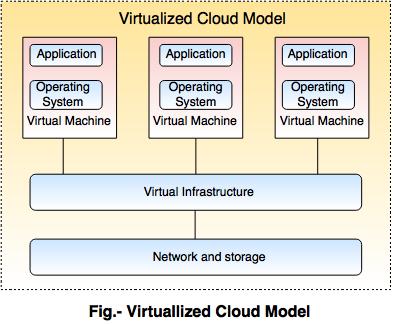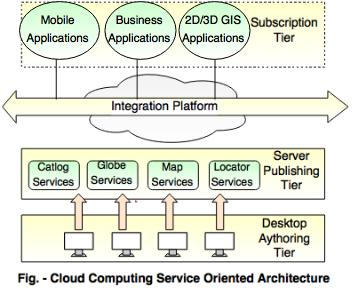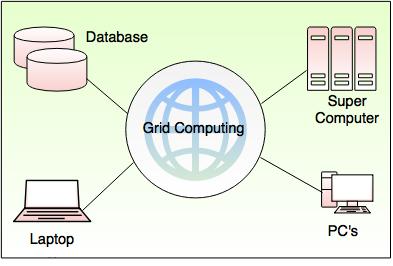Cloud Computing Technologies
Introduction
The technologies that work behind the cloud computing platform to make it flexible, reliable and usable are:
1) Virtualization
2) Service-Oriented Architecture (SOA)
3) Grid Computing
4) Utility Computing
1) Virtualization
- Virtualization is a technique that allows sharing of one physical instance of an application or resource between multiple customers or organization.
- The main use of this technology is to provide the applications with standard versions to their cloud users.
For example, if the latest version of application is released then cloud provider should provide the latest version to their users.

Types of Virtualization
Following are types of virtualization:
i) Hardware Virtualization
ii) Operating system Virtualization
iii) Server Virtualization
iv) Storage Virtualization
i) Hardware Virtualization- If the Virtual Machine Manager(VMM) or Virtual Machine Software(VMS) is directly installed on the hardware system, it is called as Hardware virtualization.
- The hardware virtualization is used for the server platform because controlling a virtual machine is easier than controlling a physical server.
ii) Operating System Virtualization- If the Virtual Machine Manager(VMM) or Virtual Machine Software(VMS) is installed on the Host Operating System rather than being directly installed on the hardware system, it is called as Operating System Virtualization.
- Operating System Virtualization is done for testing the applications on various platforms of OS.
iii) Server Virtualization- If the Virtual Machine Manager(VMM) or Virtual Machine Software(VMS) is directly installed on the server system, it is called as Server Virtualization.
- If single physical server is divided into multiple servers for balancing the load on demand basis, then Server Virtualization is used.
iv) Storage Virtualization- The process of grouping the physical storage from multiple network storage devices is known as Storage virtualization. After grouping multiple storage devices to the physical storage it looks like a single storage device.
- Storage virtualization is used for back-up and recovery purposes.
2) Service-Oriented Architecture (SOA)
SOA is an application framework which takes everyday business applications and divides them into separate business functions and processes called Services.

3) Grid Computing
- Grid computing is the structure of distributed computing, in which a group of computer resources from various locations are connected to each other to obtain a common objective.
- The computer resources are different and geographically spread.
- Grid system are designed for sharing of resources through distributed and large-scale cluster computing.
- Grid computing breaks the composite tasks into smaller pieces, that are distributed to CPUs and consist in the grid.

4) Utility Computing
- Utility computing is based on Pay-per-Use model.
- It provides computational resources on demand as a metered service.
- All the managed IT services, Grid computing, cloud computing are based on the concept of grid computing.


